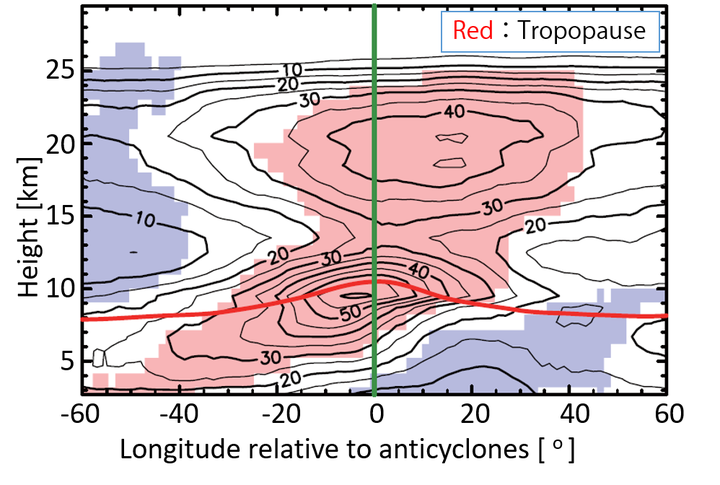Simultaneous occurrence of polar stratospheric clouds and upper-tropospheric clouds caused by blocking anticyclones in the Southern Hemisphere

Abstract
Previous studies have reported that polar stratospheric clouds (PSCs) are frequently observed simultaneously with upper-tropospheric clouds (UCs) in the Southern Hemisphere. However, it has not yet been examined whether the UCs that simultaneously occur with PSCs are actually located below the height of the tropopause, which is modified by tropospheric disturbances. Furthermore, the mechanism of this simultaneous occurrence has not yet been clarified. This study statistically examines the simultaneous appearance of PSCs and UCs using the Cloud-Aerosol Lidar and Pathfinder Satellite Observation (CALIPSO) for the five austral winters of 2007–2011. From correlation analyses and statistical dependence tests, it is shown that the simultaneous occurrence frequencies of clouds with an altitude range of 15–25 km and 9–11 km are significant. The analyses based on tropopause-relative altitude suggest that the occurrence frequency of clouds at altitudes higher than 6 km above the local tropopause (i.e., PSCs) is significantly correlated with that of clouds around and slightly above the tropopause. These results indicate that the UCs observed simultaneously with PSCs reported in previous case studies are likely located around and slightly above the tropopause rather than in the troposphere. It is also shown that the simultaneous occurrence of PSCs and UCs is frequently associated with blocking highs that have large horizontal scales (several thousand kilometers) and tall structure (up to a height of ~15 km). The longitudinal variation of blocking high frequency accords well with that of the simultaneous occurrence frequency of PSCs and UCs. This fact suggests that the blocking highs provide a preferable condition for such simultaneous occurrences. Moreover, the composition of PSCs is investigated as a function of relative longitude of the anticyclones including blocking highs. It was discovered that relatively high proportions of STS (super-cooled ternary solutions), Ice, and Mix2 (mixture of nitric acid trihydrate and STS) types are distributed towards the windward, near, and leeward side of anticyclones in westerly background flows, respectively.